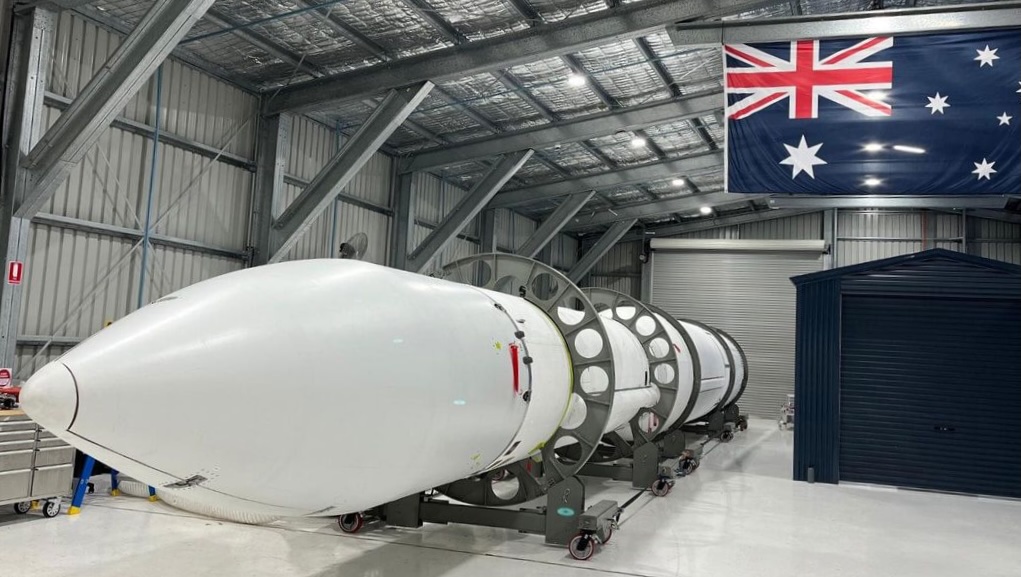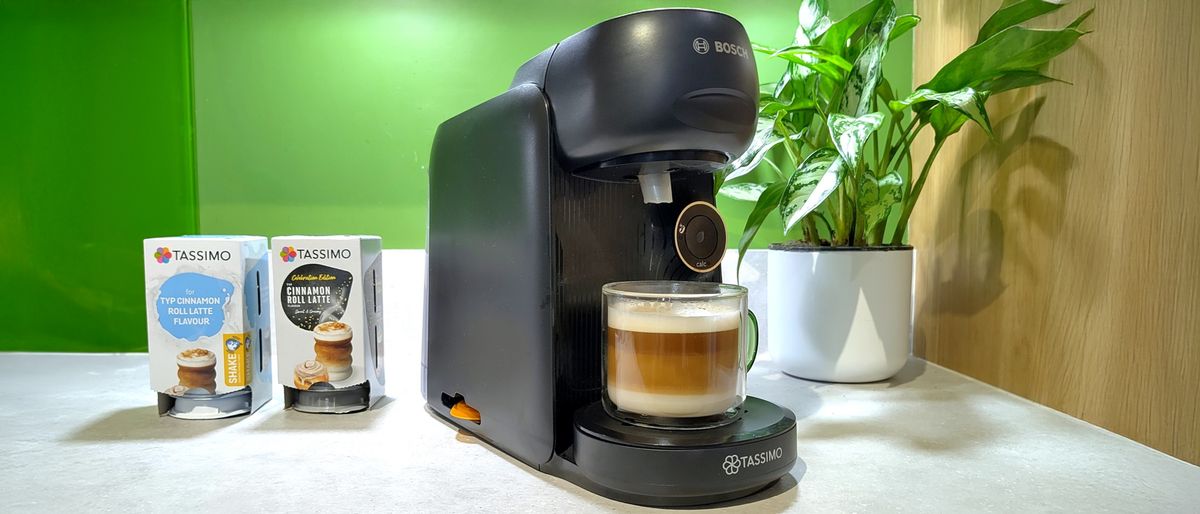"I thought best case was maybe 40 seconds of flight time, but I'll take 14 as a win."
Gilmour Space's Eris rocket lifts off from Bowen Orbital Spaceport in Austraia. Credit: Gilmour Space
Back-to-back engine failures doomed a privately developed Australian rocket moments after liftoff Tuesday, cutting short a long-shot attempt to reach orbit with the country's first homegrown launch vehicle.
The 82-foot-tall (25-meter) Eris rocket ignited its four main engines and took off from its launch pad in northeastern Australia at 6:35 pm EDT (22:35 UTC) Tuesday. Liftoff occurred at 8:35 am local time Wednesday at Bowen Orbital Spaceport, the Eris rocket's launch site in the Australian state of Queensland.
But the rocket quickly lost power from two of its engines and stalled just above the launch pad before coming down in a nearby field. The crash sent a plume of smoke thousands of feet over the launch site, which sits on a remote stretch of coastline on Australia's northeastern frontier.
Gilmour Space, the private company that developed the rocket, said in a statement that there were no injuries and "no adverse environmental impacts" in the aftermath of the accident. The launch pad also appeared to escape any significant damage.
The company's cofounder and CEO, Adam Gilmour, spoke with Ars a few hours after the launch. Gilmour said he wasn't surprised by the outcome of the Eris rocket's inaugural test flight, which lasted just 14 seconds.
"I didn't expect that we would get to orbit," he said. "Never did. I thought best case was maybe 40 seconds of flight time, but I'll take 14 as a win."
The company shared a video of the flight on X.
Liftoff completed, launch tower cleared, stage 1 tested.
Awesome result for a first test launch. pic.twitter.com/EYbNbGDz3l
— Gilmour Space (@GilmourSpace) July 30, 2025
The Eris launcher consists of three stages, with four of Gilmour's Sirius engines on the booster, a single Sirius engine on the second stage, and an engine named Phoenix on the third stage. The Sirius engines use hybrid propulsion, with a solid fuel and hydrogen peroxide as an oxidizer, while Phoenix burns a mixture of kerosene and cryogenic liquid oxygen. The Eris rocket is designed to place payloads of up to 670 pounds (305 kilograms) into low-Earth orbit, according to Gilmour's website.
In a statement, Gilmour Space called the first Eris test flight "a major milestone toward offering low-cost, responsive launch services for small satellites globally."
"Congratulations to the Gilmour team on today's achievement," said Enrico Palermo, head of the Australian Space Agency. "It is rare for first launches to reach orbit. That is part of the innovation cycle and why you test. We look forward to the next phases of the test program."
Diagnosing failure
Gilmour's engineers determined that propulsion failures were the likely cause of the accident.
"All the data we have now is just from what we've seen on videos, and it looks like an engine failed within the first few seconds of the flight," Gilmour said in an interview with Ars. "Then the rocket has enough power to go up with three engines, and the control system was doing a marvelous job of keeping it vertical. But I think as we kind of cleared the tower, a second engine looked like it's failed, and that's when we couldn't keep going, and we came back down again."
Hybrid engines are an unconventional choice for an orbital-class rocket. They typically don't produce as much thrust as conventional solid- or liquid-fueled rockets. But they're less complex than liquid engines, and unlike a solid rocket motor, hybrid engines can be throttled or turned off if there is a problem.
Gilmour's team of more than 200 employees designed and developed the bulk of the Eris rocket, including the engines, structures, avionics, software, and the spaceport itself. Most of the company's engineers are new to the space industry, but Gilmour's staff includes a handful of veterans from other rocket companies, including Rocket Lab, Firefly Aerospace, Virgin Orbit, and Avio.
"Most of what we do, we develop ourselves the hard way, with pure R&D, with failure," Gilmour said.

Gilmour's Eris rocket inside a hangar at the launch site in northeastern Australia. Credit: Gilmour Space
The long wait for regulatory approval from the Australian government may have been a contributing factor in the outcome of the test flight, according to Gilmour. The company rolled the Eris rocket to the launch pad for prelaunch testing in April 2024, but it took more than a year to secure the go-ahead from Australia's Civil Aviation Safety Authority and the Australian Space Agency to launch.
"We had to wait 18 months to get the regulatory approval to launch with the rocket finished," Gilmour said. When it wasn't on the launch pad for testing, the rocket was stored horizontally inside a hangar about a mile from the beach, at risk to corrosive damage from salt air.
"I was just getting more and more concerned that the rocket was getting old," Gilmour said. "We had to replace a lot of things on it during testing, and we were just getting very nervous that the longer we waited, the worse that would get. So for that old vehicle to get off the pad, to clear the tower, to clear the launch pad before it went out, I'm really happy with that."
Heading up from Down Under
The last attempt to launch a satellite from Australian soil was in 1971, when the British Black Arrow rocket lifted off from a military range in South Australia and placed a UK-built satellite into orbit. Gilmour is leading the charge to bring orbital launches back to Australia, this time with a domestic rocket.
Adam Gilmour founded his space company with his brother James in 2012 after a career in banking. Gilmour raised approximately $90 million, primarily from venture capital firms, to get the first Eris rocket to the launch pad. Just last week, the Australian government announced a funding commitment of 5 million Australian dollars ($3.2 million) for Gilmour to support the development of a liquid-fueled engine for the Eris rocket's second stage.
This is a modest investment for Gilmour's capital-intensive effort to field an orbital-class launcher.
"There's a new minister that's in charge of space, among other things, and he's already texted me today and said congratulations," Gilmour said. "So it looks like we're turning a new leaf, and things are looking good again, and I'm feeling pretty positive about what we can do with the Australian government."
The second Eris rocket is in production at the company's headquarters in Gold Coast, Queensland. Gilmour said the structure of the next rocket is complete, but engineers waited to build the engines until they saw how the first rocket performed.
"I'm glad [we did that] because they failed," Gilmour said. "So, I'm going to be doing a few more engine tests before I chuck more into the rocket. I'm estimating that will take about another six months to finish the build, and then we've got to test it for another month or so. So I'm looking for a January, February launch for the second one."
But first, Gilmour must find out what went wrong with the first rocket. The test flight was the first time Gilmour fired a cluster of four of its Sirius hybrid engines together, although engineers performed numerous single-engine test-firings. Hybrid engines, unlike liquid-fueled engines, can only be fired once, so building a dedicated booster was an expense the company chose to avoid.
"Why did the engines fail? We have to figure that out. We don't know," Gilmour said. "It's a little bit unusual they failed so early. But again, those engines have been on that rocket for more than 18 months, and you can't test them. So I wouldn't be surprised if we just find out that wear and tear from age has been a contributing factor—a lot of the rubber seals and all the rest of the ablative materials."
"We never designed it to be dormant for 18 months," he said. "So I think one of the lessons learned is we're not going to build a rocket and then wait 18 months again to have another launch license."










 English (US) ·
English (US) ·